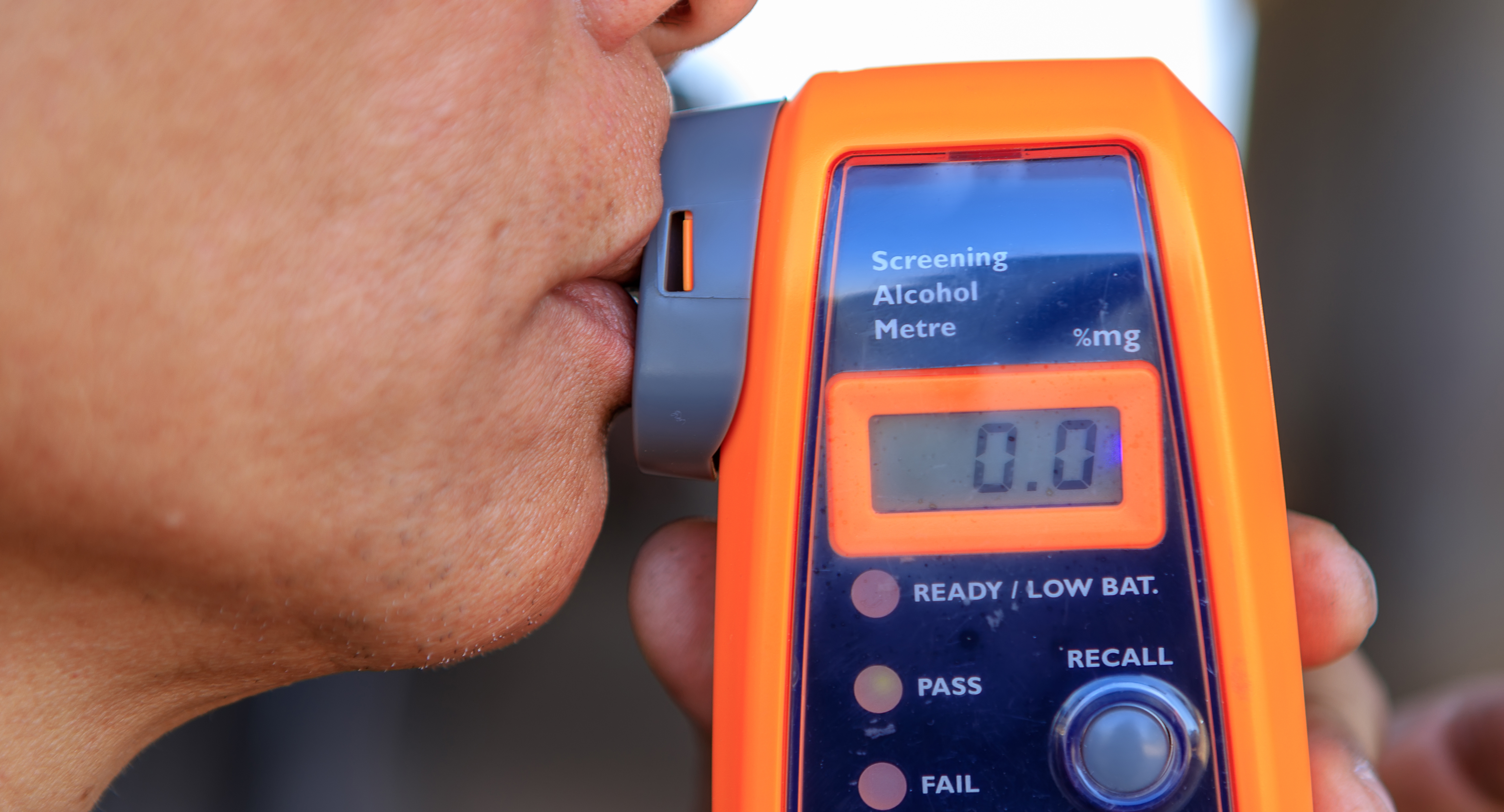When it comes to the differences between voluntary manslaughter and murder, things can get a little confusing—after all, they both involve one person killing another person on purpose. The distinctions between the two charges hinge on key legal elements, including the presence (or lack) of premeditation, deliberation, and malice aforethought.
In this article, we’ll unravel the legal nuances between voluntary manslaughter and other homicide charges and discuss how each factor can impact the penalties and punishments associated with the offense.
If you are facing voluntary manslaughter charges, it’s essential that you get in touch with an experienced criminal defense attorney immediately. Voluntary manslaughter is a serious offense, and a conviction can irrevocably and permanently damage every aspect of a convicted person’s life.
What Is Voluntary Manslaughter?
Under federal law, manslaughter is broken up into two separate categories: voluntary and involuntary. Voluntary manslaughter is defined in the U.S. Code, Title 18. Crimes and Criminal Procedure § 1112 as happening “Upon a sudden quarrel or heat of passion.”
Voluntary manslaughter is the deliberate killing of another person when it happens in “the heat of passion,” as a response to adequate provocation. Unlike murder, there’s no prior planning or premeditation involved.
For example, if Dave got into an unplanned bar fight with a stranger and killed them, he could be charged with voluntary manslaughter. Other examples include:
- The defendant finds their partner sleeping with someone else, is overwhelmed with anger, and kills their partner or partner’s lover impulsively.
- The defendant was being abused by their partner, they got into a domestic fight and the defendant killed their partner.
- The defendant acted in self-defense but used far more force than what was reasonably necessary, leading to the victim’s death.
- The defendant becomes enraged after finding someone harming or hurting another person (such as a loved one), and they impulsively attack and kill the perpetrator.
Voluntary Manslaughter vs. Murder
The key factors that differentiate murder from voluntary manslaughter are as follows:
- The defendant’s state of mind at the time of the killing
- The presence or absence of premeditation or malice aforethought
Other factors that influence the categorization of homicide include the level of intent, the presence of mitigating circumstances, and the presence or absence of adequate provocation.
Intent and Malice Aforethought
One of the key legal elements that must be established for a homicide to be classified as a murder or voluntary manslaughter is the defendant’s level of intent.
Murder offenses are characterized by the presence of malice aforethought. This means that the defendant must have intended to either cause serious bodily injury or death of another person, without legal justification or excuse. Without the presence of malice aforethought, the homicide could be classified as involuntary manslaughter.
Intent can be both express (premeditated) or implied (resulting from conduct showing a reckless disregard for life—such as deliberately shooting or driving into a crowd of people).
In voluntary manslaughter cases, the killing happens as a response to adequate provocation under circumstances that may drive a reasonable person to act in a similar way. In other words, the defendant would not have had time to deliberate, plan, or second guess their actions.
Mitigating Circumstances
The presence of certain mitigating factors or circumstances can downgrade a charge from murder to voluntary manslaughter. For example, the level of culpability a defendant faces can be lowered if it is shown that they acted in self-defense or the defense of another innocent party.
Key Legal Elements
The key legal elements that must be established for murder charges include:
- Actus Reus: An unlawful act was committed, resulting in another person’s death.
- Mens Rea: The defendant intended to kill or cause serious bodily injury.
- Premeditation/Malice Aforethought: The defendant planned, or thought about committing homicide or causing serious bodily injury.
For voluntary manslaughter, the following elements must be satisfied:
- The presence of adequate provocation: For a killing to be considered involuntary Manslaughter, it must be shown that the defendant was provoked by something that may cause an ordinary, reasonable person, under the same circumstances, to become emotionally overwhelmed, lose control, and act impulsively. Examples of what may be accepted as adequate provocation are listed further down in this article under “Provocation as a Defense in Voluntary Manslaughter.”
- Heat of Passion Circumstances: The defendant must have actually been provoked for involuntary manslaughter. If the crime was not committed in the “heat of passion,” it would likely not qualify as manslaughter.
- No reflection or cooling-off period: For the offense to be classified as involuntary manslaughter, there must be an absence of deliberation or premeditation. If the defendant had time to “cool off,” reflect, or second guess the actions that led to death, then the crime no longer took place in the heat of passion and, therefore, cannot be classified under any category of manslaughter. Instead, a heat of passion killing is committed impulsively as an immediate response to provocation.
Mens Rea in Voluntary Manslaughter Cases
“Mens Rea” is a legal term that refers to a defendant’s knowledge and level of intent during the commission of a crime. It’s a critical element in homicide charges, as establishing the accused person’s mental state can be used to determine different degrees of culpability and various levels of charges.
Different types of mens rea, or levels of culpability, include:
- Intent: Where the accused commits the offense intentionally and consciously desires to reach a specific result through their actions. For example, they plan to take a knife to someone’s house and assault them with the full intention of inflicting bodily injury or death.
- Knowledge: In this case, the defendant is aware that their action may cause certain consequences, even if they don’t intend or desire those consequences. For example, they get into a fight and hit someone, which unintentionally results in that person’s death.
- Recklessness: A person acts recklessly if they know and are aware that their action creates substantial risk or danger, but they disregard it. A typical example is drunk driving, where the driver chooses to get behind the wheel even though they know they are intoxicated.
- Negligence: Criminal negligence is when a person unintentionally causes harm by failing to act responsibly. For example, a parent or guardian leaves a small child alone in a hot vehicle.
Depending on the accused’s level of culpability, homicides in Texas can result in charges ranging from capital murder to criminally negligent homicide. This, in turn, has a significant impact on sentencing and punishment. The punishment for capital murder can include a life sentence or even the death penalty. In contrast, the prison sentence for criminally negligent homicide in Texas typically ranges from 180 days to 2 years.
Provocation as a Defense in Voluntary Manslaughter
Provocation cannot be used as a defense, but it can sometimes be used as a strategy to reduce charges from murder to voluntary manslaughter. This is achieved by arguing that the accused person’s actions were justified, or at least their level of culpability is mitigated (i.e., they are less morally culpable) because they only acted in the heat of passion, as a response to the deceased’s own conduct as opposed to carrying out a premeditated act out of pure malice.
For provocation to qualify as a mitigating factor, a jury must recognize that under the same circumstances, any reasonable person may also have become overwhelmed by emotions and lost control, leading them to react in a similar way. The following factors determine whether provocation can be used to lower charges:
- Adequate provocation: The presence of adequate provocation. Words alone will usually not qualify as an adequate provocation. On the other hand, catching a spouse in the act of adultery or being assaulted may constitute adequate provocation. Similarly, a sudden, heated argument in which one party uses offensive racial slurs towards the other person may result in the escalation of tensions and emotions that lead to a violent, impulsive reaction.
- Reasonable Person standard: The provocation must be serious enough to goad an ordinary, rational person into reacting rashly.
- Timing: Provocation is only a mitigating factor in crimes committed in a “heat of passion.” There can be no cooling-off period between the provocation and the action that led to death.
For example, Dave opens the door to find his spouse sleeping with his best friend. The sudden overwhelming feelings of anger, betrayal, and jealousy cloud his judgment, and he grabs a nearby heavy object and attacks one or both people.
A court might accept that Dave was adequately provoked and carried out the assault in “a heat of passion.”
However, if Dave walked out of the house without reacting and took a few hours or days to think about things before finally attacking his spouse or his spouse’s lover, the crime would no longer be done in a “heat of passion.” The level of deliberation involved in the latter circumstances would likely result in the offense being classified as a murder.
Imperfect Self-Defenses in Voluntary Manslaughter Cases
In a homicide case, Perfect Self-Defense describes a situation in which there was a reasonable need for deadly force by the defendant to protect either themselves or another person’s life. It suggests that the defendant did nothing wrong, which usually results in an acquittal if accepted.
For example, a child is suddenly attacked by an armed person who intends to cause serious physical harm or even death. In response, the defendant quickly assesses the situation and determines they have no choice but to use reasonable and necessary force to quickly protect the child from imminent danger. They attack the assailant, who falls, hits their head on a hard surface, and dies.
If the measure the defendant took is seen to have been proportionate to the level of threat they (or in this case, the child) faced, then the killing would be considered to have been legally justified. This would make the defendant’s actions “Perfect Self-Defense.”
In contrast to Perfect Self-Defense, Imperfect Self-Defense refers to circumstances where the defendant honestly believed they, or someone else, was in imminent danger of death or serious bodily injury, but that belief was unreasonable. They are then deemed to have responded with excessive force. In other words, the defendant may have genuinely acted out of fear, but their reaction was disproportionate to the threat. In this situation, the court accepts that another reasonable person in the same situation may have made the same error in judgment.
Unlike Perfect Self-Defense, which is a complete defense against charges, Imperfect Self-Defense can only be used as a mitigating factor to reduce the defendant’s culpability. In murder cases where the defendant acted out of fear, Imperfect Self-Defense could be invoked to lower the charges to voluntary manslaughter.
Sentencing and Legal Consequences
Voluntary manslaughter is a serious offense that is typically met with severe penalties. However, the exact punishment can vary widely from case to case because sentencing decisions are influenced by several aggravating or mitigating factors, including:
- The presence or absence of a criminal record or prior convictions
- The method or weapon used in the crime, including the level of violence
- The victim’s vulnerability
- The defendant’s willingness to surrender to law enforcement officers
- The defendant’s level of remorse or regret
- The defendant’s mental state
- The defendant’s level of culpability (and the presence or absence of provocation)
When it comes to punishment for voluntary manslaughter, Federal law allows imprisonment for up to 10 years, a fine, or both. However, sentencing procedures and punishments vary greatly depending on jurisdiction.
For example, the sentence for voluntary manslaughter in California is imprisonment for up to 11 years and a fine of up to $10,000.
In contrast, Texas does not differentiate between voluntary and involuntary manslaughter. The sentence for Manslaughter in Texas can range from two to 20 years imprisonment, a fine of up to $10,000, or both. Factors such as insanity, self-defense, and “heat of passion” can be used as mitigating factors to reduce the penalties or—depending on the circumstances—as defenses.
Voluntary Manslaughter Trials: Strategies and Implications
For a murder conviction, the burden falls on the prosecution to prove that the defendant intentionally and maliciously caused another person’s death.
While the prosecution’s tactics will focus on proving that the defendant acted with intent or malice aforethought, the defense’s strategy will be to persuade the jury that the defendant’s actions were either justified (as in Perfect Self-Defense) or resulted from mitigating circumstances, such as adequate provocation.
Both parties will rely on several sources of evidence, including:
- Eyewitnesses: Both bystanders who witnessed the crime and others who interacted with either party in the days before the killing can play a crucial role in providing an account of the events leading up to the crime as well as the crime itself
- Character witnesses: People who have previously interacted with the defendant be asked to vouch for the defendant’s character and their non-violent nature, while the prosecution may bring character witnesses that recount historical violent or aggressive behavior from the defendant
- Expert witnesses: Professionals, such as psychologists, medical professionals, or forensic experts, may be asked to provide insights to support either party, including the defendant’s mental state
- Tangible evidence: Previous communications such as text messages, emails, or other forms of communication by the defendant and the deceased concerning either party can be used to demonstrate prior threats, premeditation, or malice
Mental Health and Voluntary Manslaughter
Mental illness, if proven, can sometimes be used as a mitigating factor in murder and voluntary manslaughter cases. However, the outcomes will depend on how the mental health issue may have impacted the defendant’s actions or perception.
In most states, if it’s proven that the defendant’s mental illness is such that they are unable to understand the nature of their actions or distinguish between right and wrong, they may be found not guilty by reason of insanity.
For example, if the accused is known to suffer from a mental illness such as schizophrenia or bipolar disorder, the court will have to establish whether the defendant was suffering from symptoms (such as paranoia, delusions, impaired judgment, or impaired self-control) during the crime. The presence of these symptoms, amongst others, could significantly lower the defendant’s level of culpability.
It’s important to note, however, that while Insanity can be used as a defense against homicide charges, defendants will typically be ordered to enter treatment or committed into psychiatric institutions.
Legal Representation and Court Proceedings in Voluntary Manslaughter Cases
Legal proceedings can be extremely complex—especially so when it comes to serious charges such as murder or manslaughter.
If you or a loved one are facing voluntary manslaughter charges, an experienced defense lawyer can help you understand the charges, ensure your constitutional rights are upheld, and help you understand the potential consequences you face relevant to your jurisdiction.
Additionally, a skilled attorney can assess all the details of the case and gather critical witness and character testimonies, police reports, insights from experts, and other crucial evidence to help demonstrate mitigating factors and build a robust defense.
Sometimes, a conviction is inevitable. Even in these circumstances, a skilled criminal defense attorney may negotiate plea bargains with the prosecution to potentially secure reduced charges or lighter penalties.
FAQs About Voluntary Manslaughter
How Does Voluntary Manslaughter Differ from Involuntary Manslaughter?
Involuntary manslaughter is the accidental killing of another person due to either negligence or reckless behavior—it lacks intent. Voluntary manslaughter is the intentional killing of another person in the “heat of passion” as a response to adequate provocation. In other words, voluntary manslaughter is a killing that occurs out of sudden anger or another overwhelming emotional response to a highly stressful situation.
How Much Time Can You Get in Jail for Voluntary Manslaughter?
Sentencing varies depending on jurisdiction and the presence or absence of mitigating or aggravating factors. Federal law states that a person can be imprisoned for up to 10 years for voluntary manslaughter, while some states have a longer maximum prison sentence. For example, the sentence for voluntary manslaughter in Texas reaches a maximum of 20 years.
What Are Some Instances of Voluntary Manslaughter?
- Two people get into a fistfight in a bar. They both fight aggressively, and one person dies as a result.
- A person opens the door to find their partner cheating on them. Overcome with feelings of anger and betrayal, they pick up a heavy object and attack their spouse, instantly killing them.
- Two people get into a heated argument. The assailant begins to shout aggressively, shove, and push. In response, the defendant pulls out a knife and repeatedly stabs the aggressor. This could be an instance of Imperfect Self-Defense, as the defendant used excessive force with a deadly weapon, which is likely to be seen as disproportionate under the circumstances.
Can Intoxication Be Used as a Defense in Voluntary Manslaughter Trials?
While arguing that the defendant was intoxicated or under the influence of drugs at the time of the killing could prove the lack of intent or malice, therefore reducing culpability (and the level of the charge from murder to manslaughter,) it usually cannot be used as a complete defense.
Additionally, the burden would be on the defendant to prove that they lacked the necessary intent to commit the crime due to them being intoxicated at the time.
What Role Does the Concept of “Heat of Passion” Play in Voluntary Manslaughter Cases?
Heat of Passion reduces the defendant’s moral culpability, which can significantly reduce the penalties they face. In Heat of Passion cases, the court accepts that the defendant was provoked and temporarily lost control. They must determine that if any reasonable person was put in the same circumstances as the defendant, they may also have experienced the same loss of self-control.




